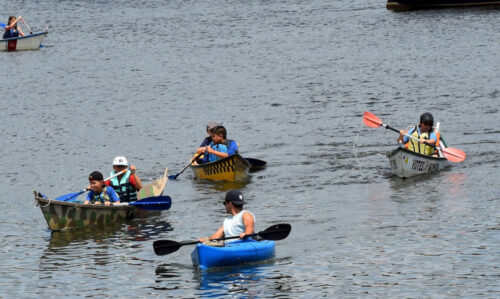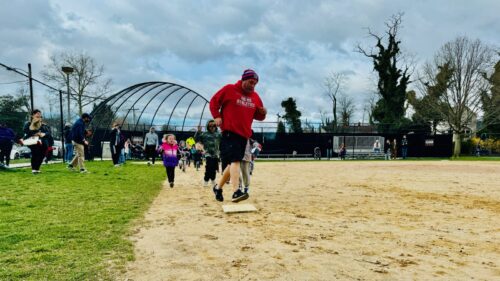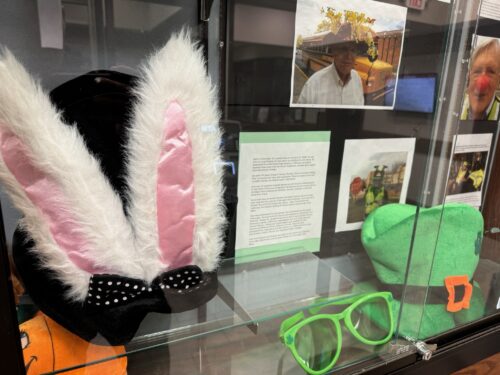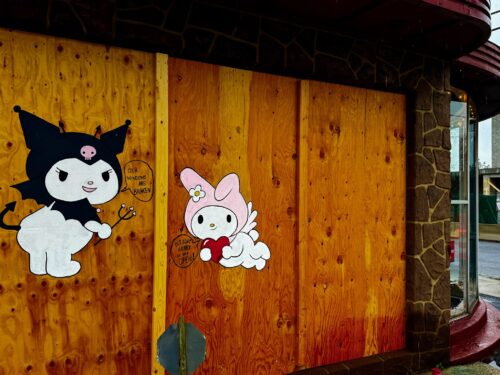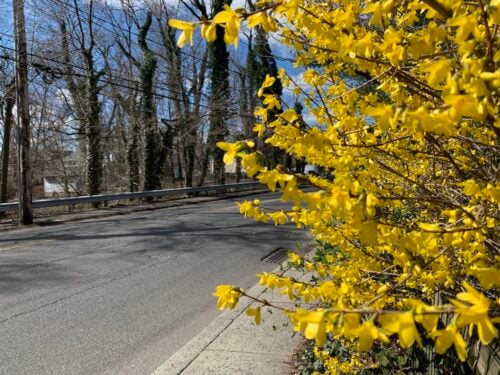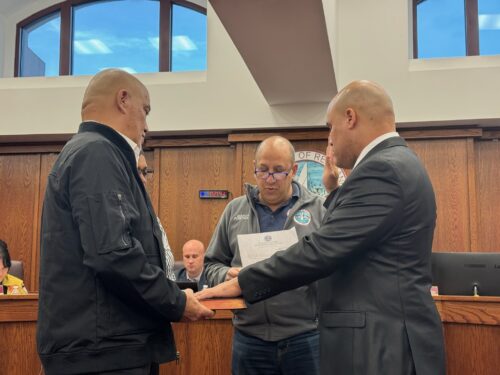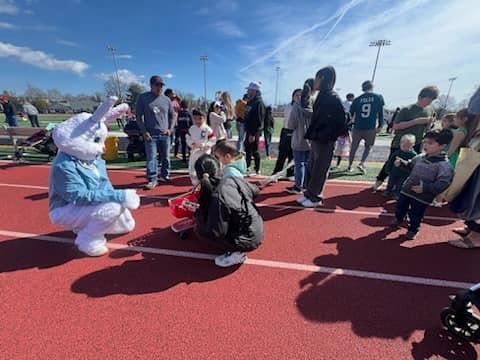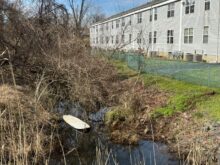
By SARAH KLEPNER

The kids follow the rules because they made them.
If you respect children, they listen to you.
My day is seamless: I’m learning all the time.
These are voices of parents, teachers and students at the Jersey Shore Free School, a social oasis tucked away in a onetime residence on Birch Ave in Little Silver.
It’s a place where the usual rules don’t apply and unusual ones do. For starters, there are no ‘teachers’ here, staff member Katie Finn tells redbankgreen one recent morning. There’s no fixed syllabus or schedule: all classes are on request, like a recent impromptu lesson in calculating a tip for the delivery of a recent communal lunch. And the school is a full democracy, entrusting even the youngest students with an equal say in all aspects of school functioning, including budget, policies, programs and even hiring.
“The kids follow the rules because they make the rules,” Finn said.
Jersey Shore Free School is based on the principle of democratic schooling called the Sudbury model, which debuted at the Sudbury Valley School in Framingham, Massachussetts in 1968 and is now the core of 35 schools around the world, according to the SVS website.
The agreed-upon criteria for decision-making are respect and safety.
The kids form “corporations” for different areas of interest, including sports, arts, and cooking. Corporations get chartered at school meeting and have officers, by-laws and a budget.
“The kids are totally in charge of their area, the staff can’t go in and change things,” said school founder Jeri Quirk.
If a student wants to see something happen that involves others, he or she makes a motion for approval. At a recent meeting, a five-year-old named Connor suggested a “saving shelf” be set aside, because “kids are building great things but little kids wreck them.” The motion was seconded, voted upon and approved.
A week later, Connor made a motion to ban junk food; it went unseconded.
“Children and teenagers are so much more capable than we give them credit for,” said Quirk. “They’re able to make decisions that most adults don’t think they can. They take responsibility because they’re allowed to.”
JSFS nrollment is currently at 21 students, with room for about 40 more, with two full-time and one part-time staff members. The school enrolls kids from 4 to 18 years old, but there are no divisions among the ages. Finn explained that mixing age groups is mutually beneficial: the older kids help the younger kids, which “boosts the self-esteem of the older kids, and the younger kids learn skills beyond their years.”
The “classes on request” are a daily reality. Quirk explained, “Our job is to be supportive but non-directive. Unless somebody comes to us, we don’t interfere at all.” Kids ask questions about matters that come up during the day.
“We value all learning equally,” said Quirk. “Children are natural learners, they’re learning constantly because they’re doing constantly. There’s a depth of interest and passion for what they’re doing that carries over into everything and into their adult lives.”
Julia, an elementary-aged student who has taken an interest in animals, is pursuing a job-shadowing position at the veterinarian’s office around the corner. She also wants to learn how to draw every kind of puppy, so she asked the art corporation for a book on drawing animals. She’s drawn 20 puppies already and plans to donate her drawings to the vet’s office.
The learning process encompasses the community as well. Some of the students have the freedom to leave the school and explore the town. One decided to make a map of Little Silver, showing where restaurants are and what levels students are granted degrees of freedom by the meeting can go where.
A key part of school structure is the interpersonal dimension. “We believe learning how to talk to a person and how to work together are as important as academic learning,” Quirk said.
When it comes to mediating disputes among kids, there are several steps. First is the school meeting, where the inevitable ins and outs of a community spending days together get hashed out. If a spat arises, an staff member has an informal “talk-about-it” with the kids having trouble.
“Little kids especially love talk-about-it’s,” said Quirk.
If an issue can’t be satisfactorily resolved informally, there is a judicial committee, made up of rotating students one younger, one older) and staff, which hears all sides of the dispute.
Quirk said the students, who had previously sent cards to Army soldiers stationed in Afghanistan, have been asking why the military hasn’t been trained in talkaboutit’s.
“There are no grades, no transcripts, and no teacher recommendations,” she said. “They’re getting in because they have the skills to say this is who I am and this is why I should attend your school.”
But are there going to be gaps in a kid’s knowledge without a formal curriculum?
“Do they know what the capital of Belgium is? Maybe not,” Quirk said. “But do most adults remember what they had memorize in school?”
“Traditional education separates subjects,” she added. “When kids learn holistically, in the context of what they’re most interested in, they don’t forget.”




